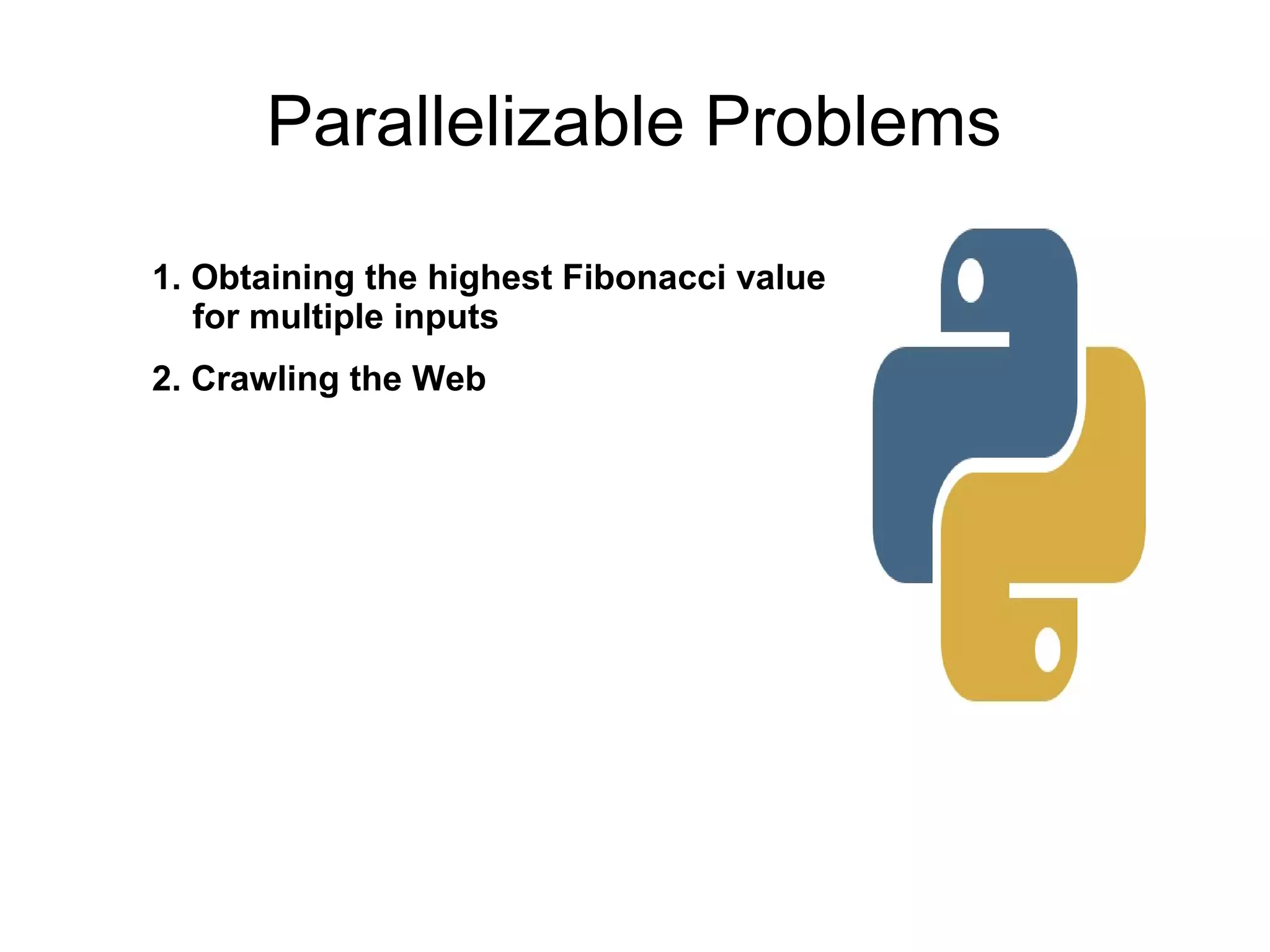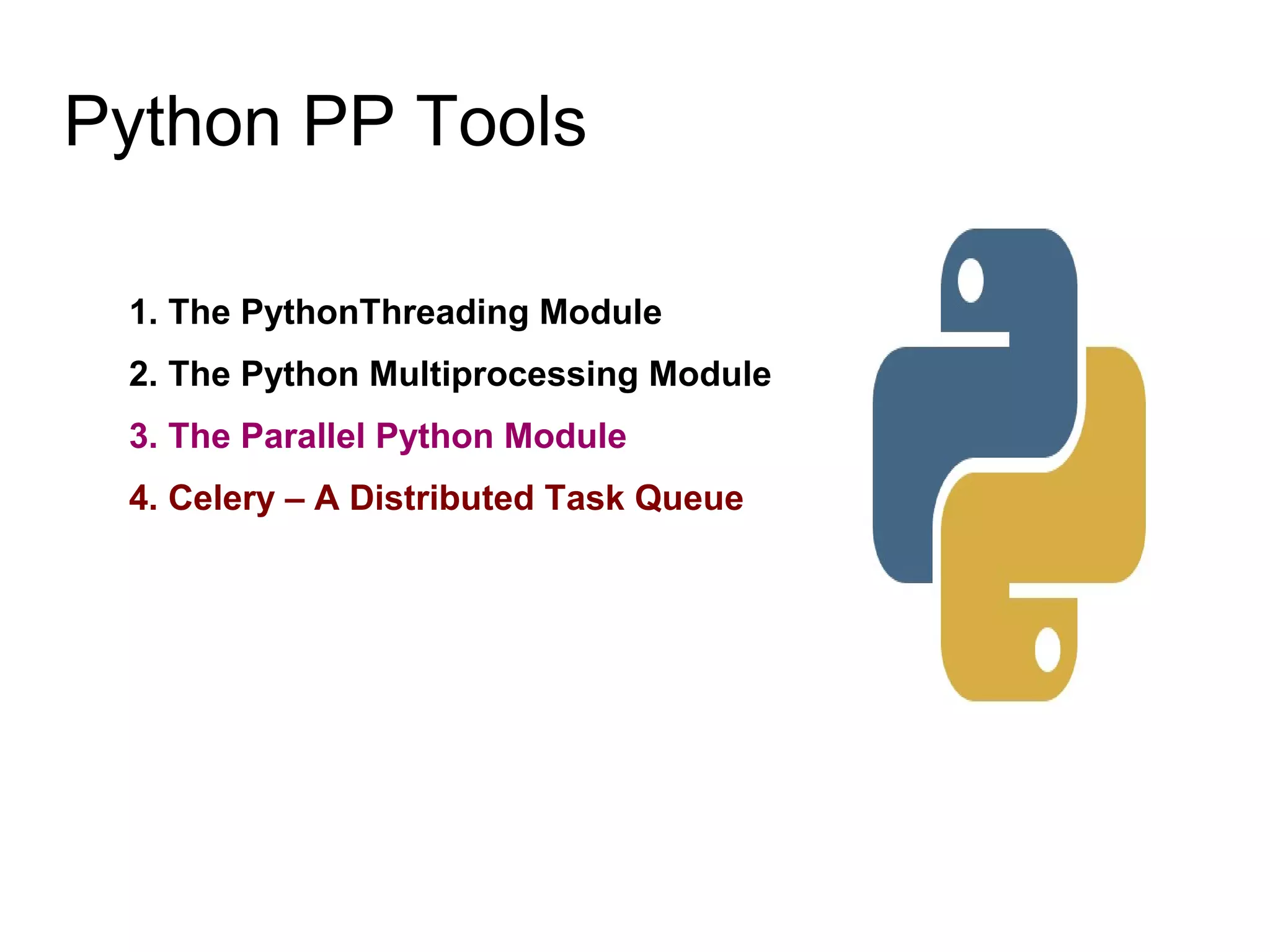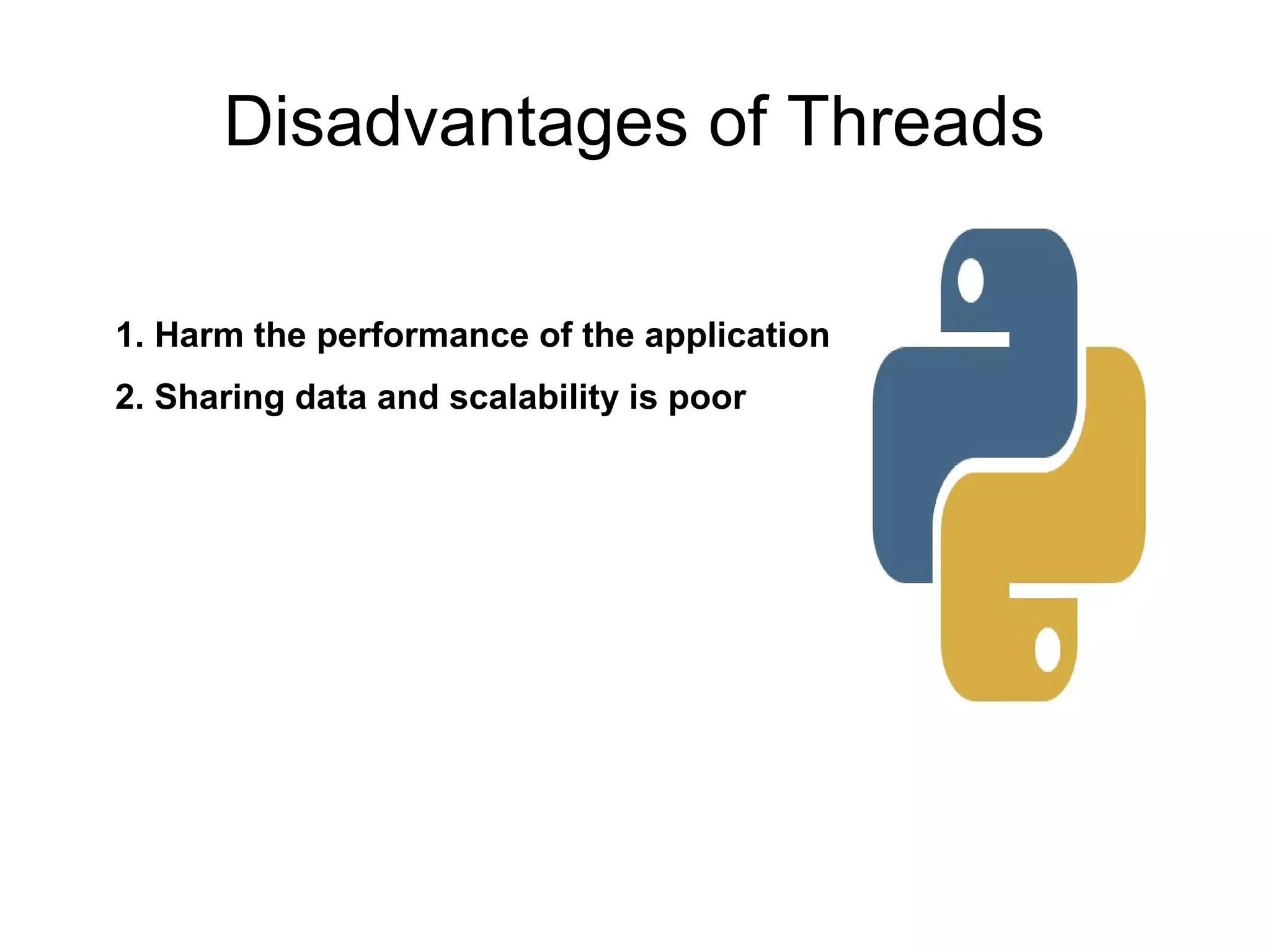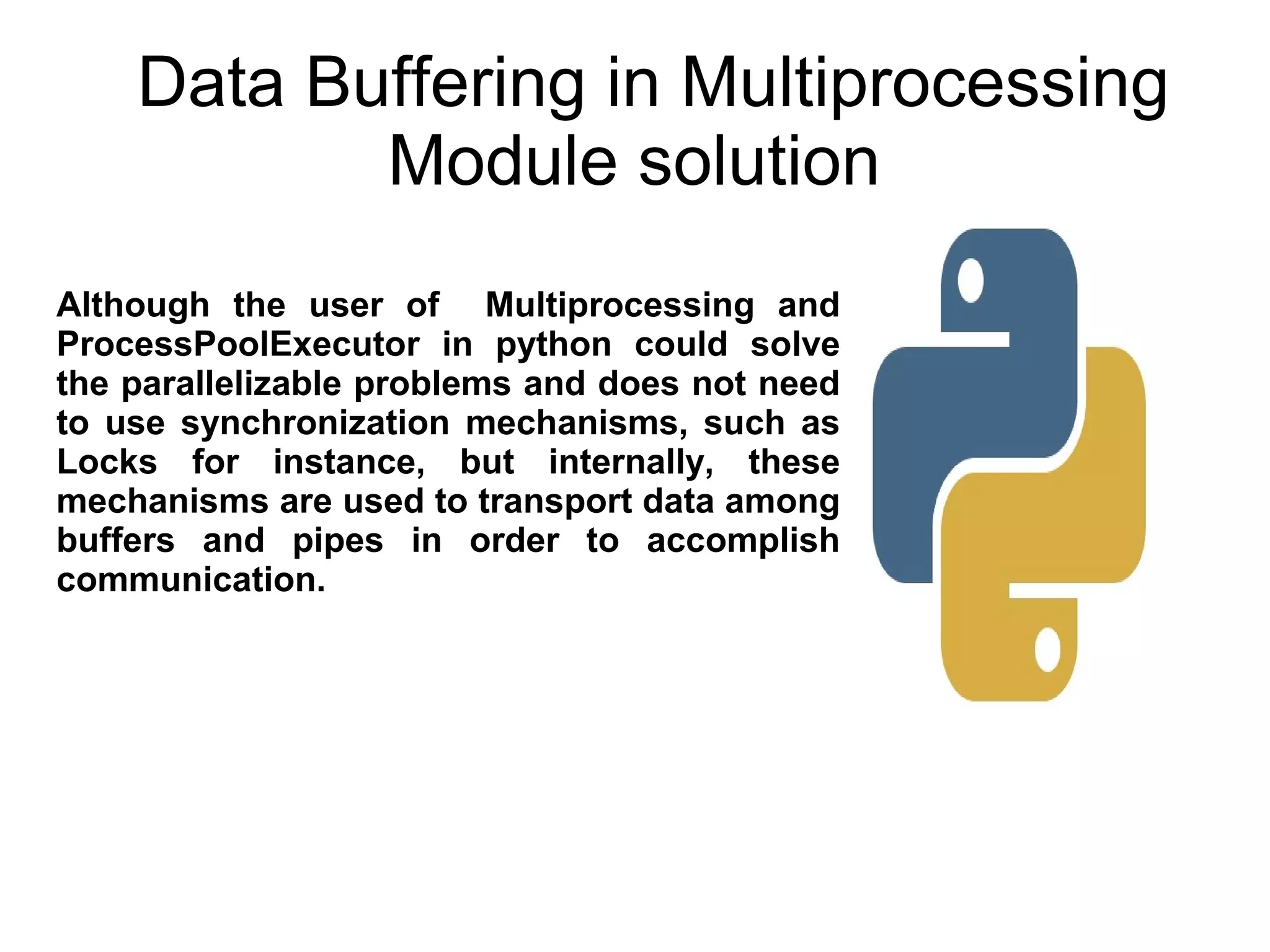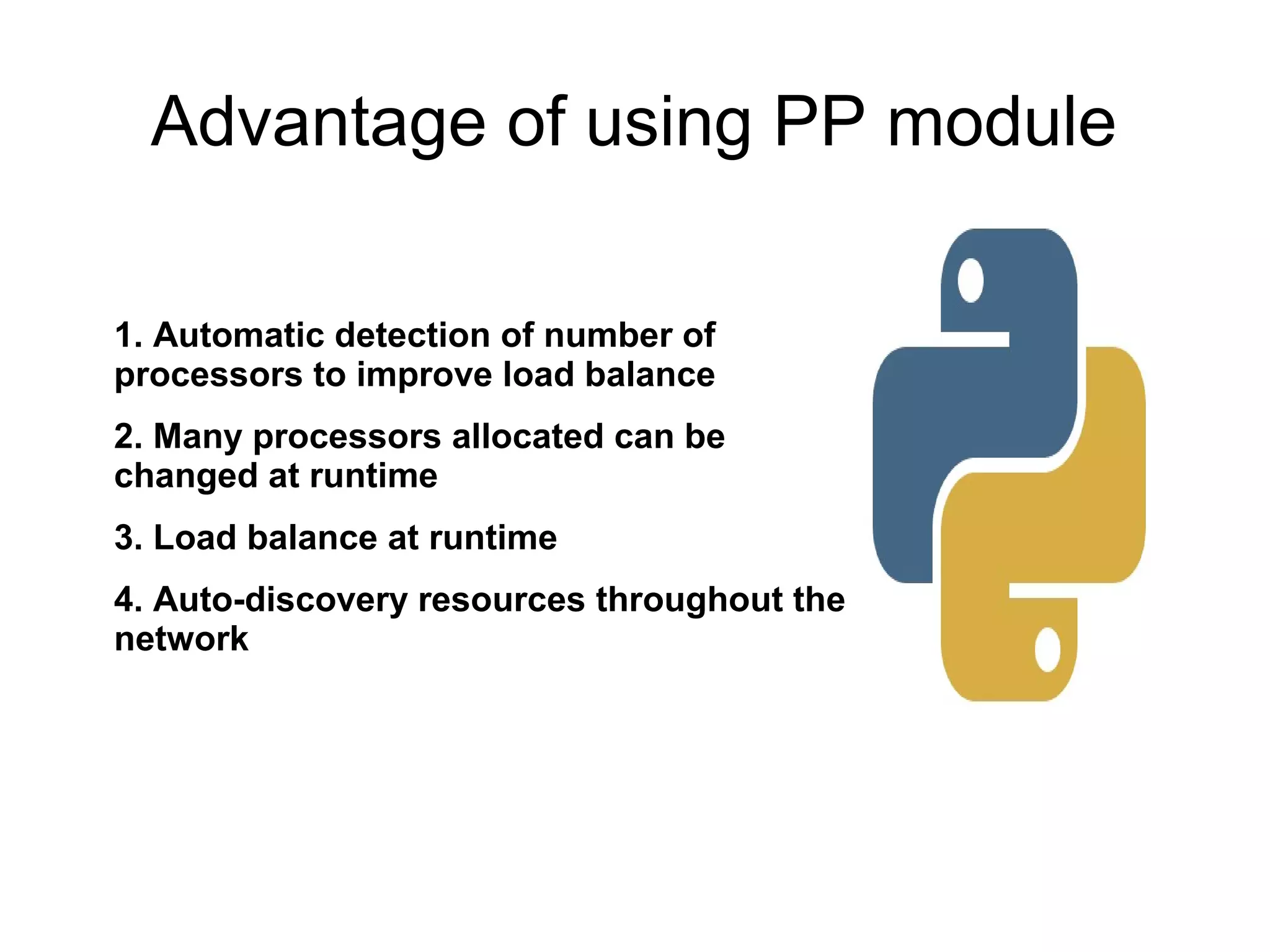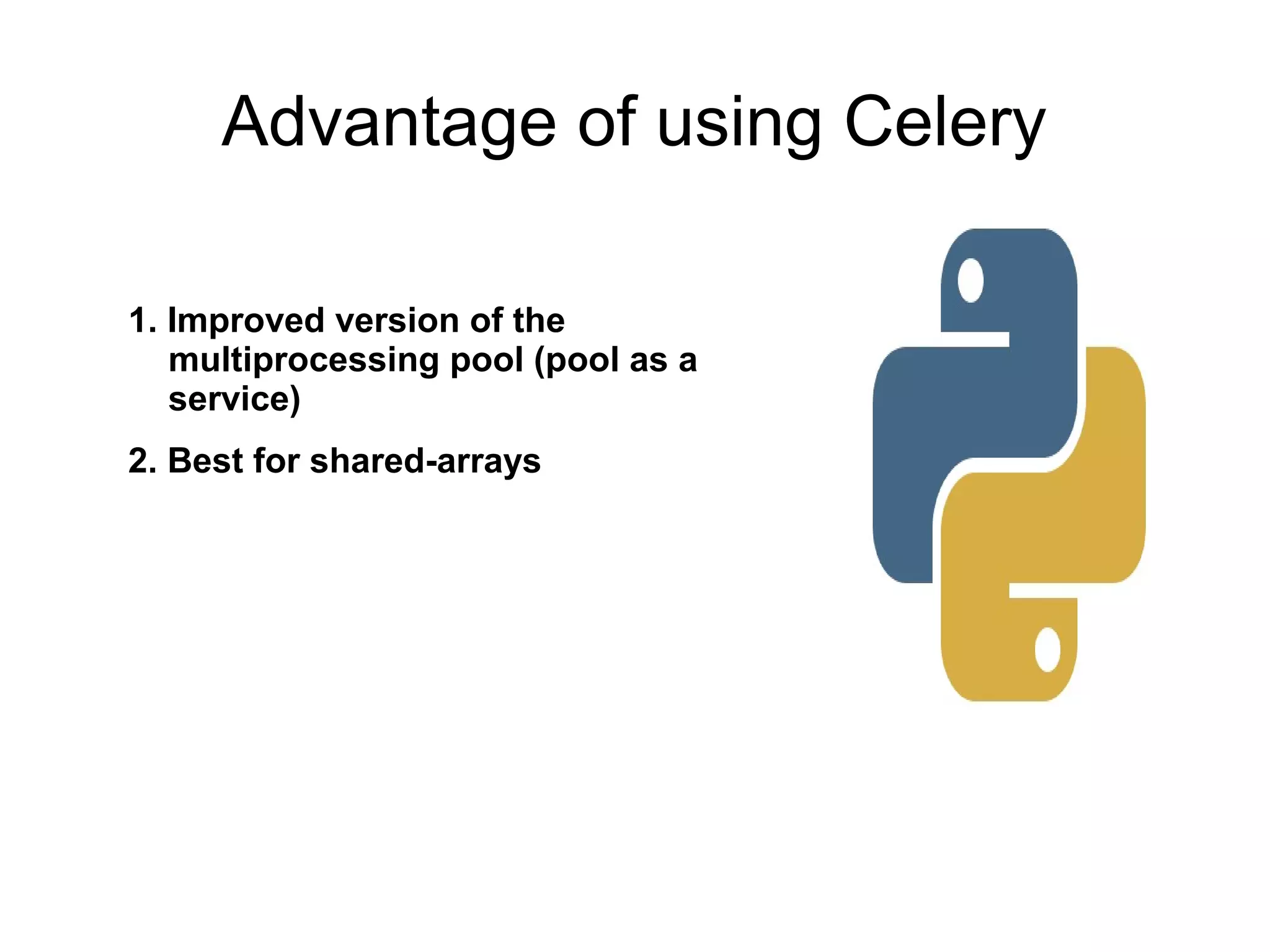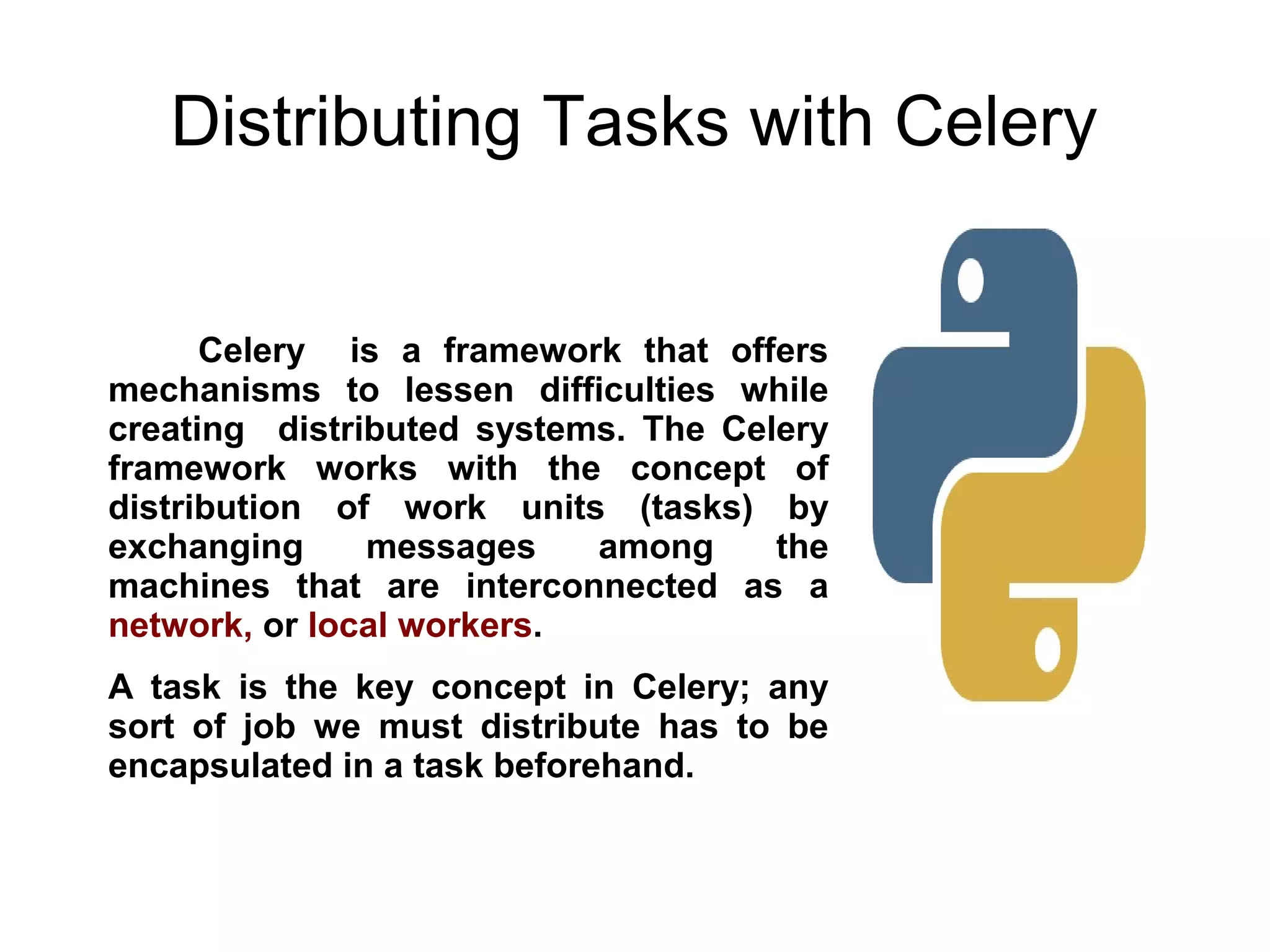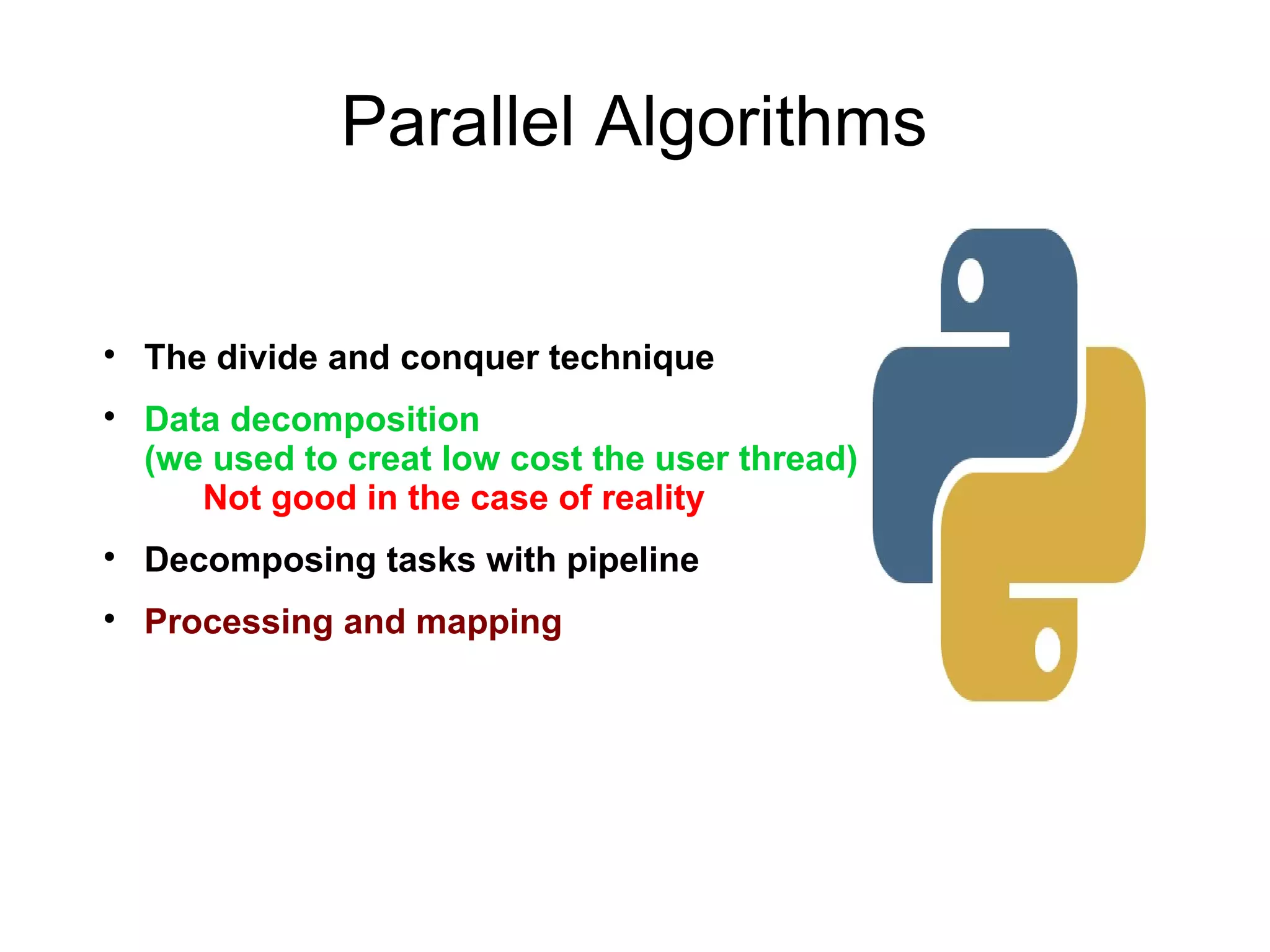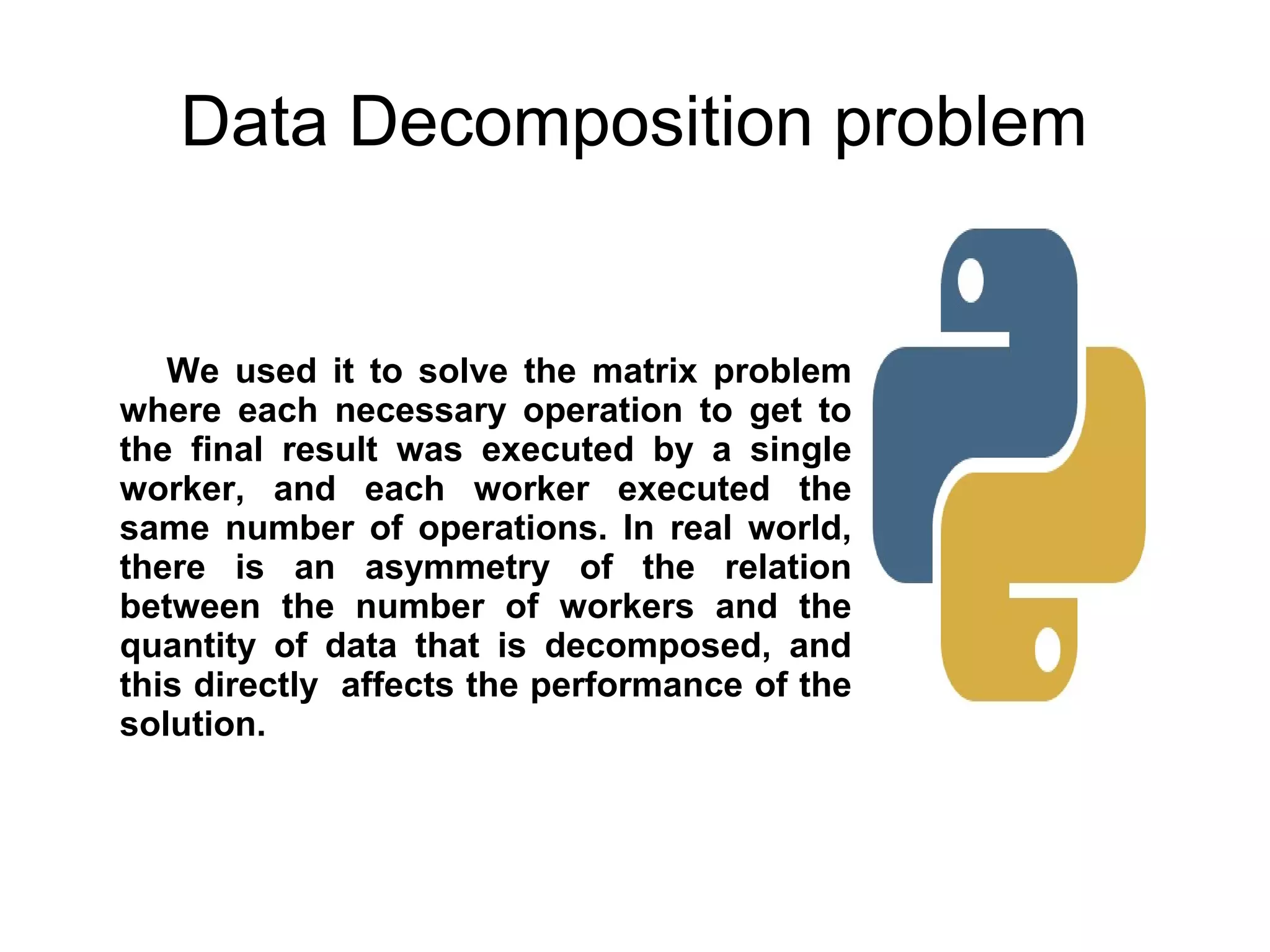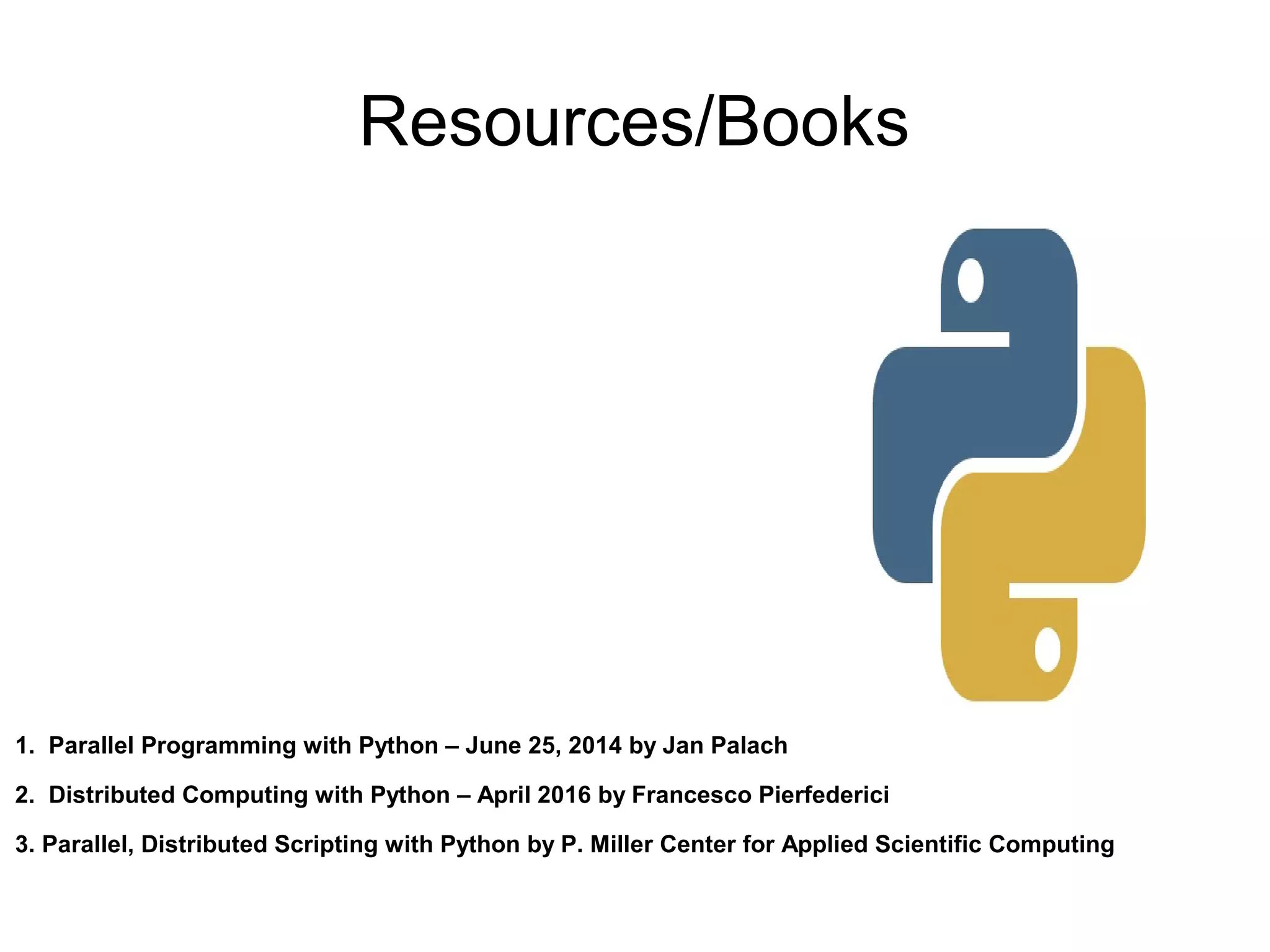This document discusses different tools for parallel programming in Python including the multiprocessing module, Parallel Python module, and Celery. It notes that while threads can harm performance and have poor scalability, multiprocessing and ProcessPoolExecutor can solve parallel problems without synchronization mechanisms, though they internally use buffers and pipes. Celery is presented as an improved version of multiprocessing that is best for shared arrays. The document also covers parallel algorithms like divide and conquer and data decomposition, noting processing and mapping is a better solution for real-world problems with asymmetric task and data distribution.


